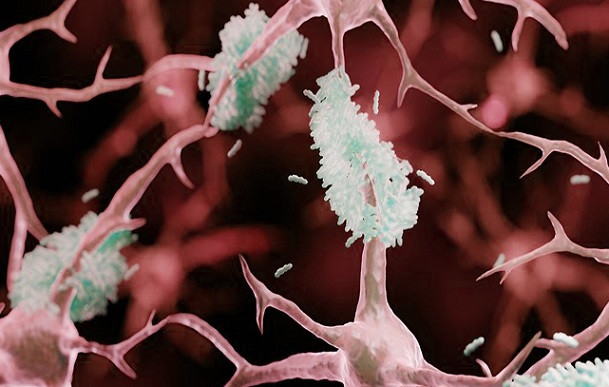Danish Study Discover Ubiquitin Enzymes That Drive Dangerous Tau Build Up in Neurodegenerative Diseases
Nikhil Prasad Fact checked by:Thailand Medical News Team Nov 16, 2025 3 hours, 18 minutes ago
Medical News: Scientists from H Lundbeck AS in Denmark have uncovered critical new insights into how harmful tau protein clumps form inside the brain. These clumps are strongly associated with Alzheimer’s disease and other neurodegenerative disorders. The research team has identified two enzymes, USP7 and USP10, as major contributors to the buildup of toxic tau aggregates. Normally these enzymes remove ubiquitin tags from proteins. However, when they act on abnormal tau, they appear to protect it from being cleared by the brain’s cleaning systems. This
Medical News report explains how this discovery opens the door to future treatments aimed at stopping tau accumulation early.
 Danish Study Discover Ubiquitin Enzymes That Drive Dangerous Tau Build Up in Neurodegenerative Diseases
Why Tau Accumulation Is Dangerous
Danish Study Discover Ubiquitin Enzymes That Drive Dangerous Tau Build Up in Neurodegenerative Diseases
Why Tau Accumulation Is Dangerous
Tau proteins usually help stabilize internal structures in nerve cells. But in Alzheimer’s disease they can twist into unhealthy shapes, stick together, and form long fibrous tangles. These tangles disrupt communication between neurons and slowly spread across different areas of the brain. The result is cognitive decline, memory loss, and progressive neurological damage. Scientists have long believed that failures in protein degradation systems are responsible, but the specific factors enabling tau to accumulate were unclear.
How USP7 and USP10 Were Identified
In the new study, researchers tested 93 different deubiquitinating enzymes to see which ones influence tau aggregation. They used neuronal cultures from rTg4510 mice, a well-established tauopathy model. The screening revealed that shutting down USP7 or USP10 led to a major drop in the formation of seeded tau clusters without reducing the normal levels of tau that neurons require. When the team used targeted RNA tools to silence these enzymes, tau aggregation was reduced by more than one third. The same outcome occurred when the cells were treated with small molecule inhibitors of USP7 and USP10.
Key Study Findings
The scientists found that blocking these enzymes increased the amount of ubiquitin tagging on abnormal tau. Ubiquitin tags act like disposal labels that direct damaged proteins toward degradation pathways. With USP7 and USP10 suppressed, the pathological tau became more heavily tagged and easier for cells to remove. This reduction in aggregation appeared consistently across several models including cultured cortical neurons, organotypic hippocampal slices, and even wild type neurons seeded with tau extracted from human Alzheimer’s disease brains. This shows that USP7 and USP10 act as central regulators of tau accumulation in both experimental and human related contexts.
What This Means for Alzheimer’s Research
The findings suggest that USP7 and USP10 help protect harmful tau aggregates from being cleared. By inhibiting these enzymes, it may be possible to enhance the brain’s natural cleanup systems without interfering with the normal functions
of tau. This represents an important therapeutic strategy, potentially slowing or preventing the progression of Alzheimer’s disease at its molecular roots. The research demonstrates that selectively targeting these enzymes could become a promising direction for drug development.
The study findings were published in the peer reviewed International Journal of Molecular Sciences.
https://www.mdpi.com/1422-0067/26/22/11062
For the latest on neurodegenerative diseases, keep on logging to Thailand
Medical News.
Read Also:
https://www.thailandmedical.news/articles/alzheimer,-dementia-
